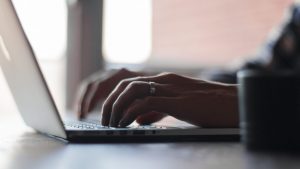OTTAWA — The Canadian Construction Association (CCA) has issued a statement criticizing the project labour agreement (PLA) between the Ottawa Hospital and the Unionized Building and Construction Trades of Eastern Ontario and Western Quebec.
In an April 24 statement, the CCA said the Ottawa Hospital’s investment of $2.8 billion in a new Civic Campus will likely cost taxpayers hundreds of millions more and leave a majority of Ottawa-area construction workers ineligible to work on the vital project.
The CCA is calling for governments to roll back procurement models that restrict participation to traditional trade unions and their employers.
Under the PLA, members of the Progressive Contractors Association of Canada and their affiliated union, the Christian Labour Union of Canada, among others, will be unable to bid on or participate in the project. A report by the Montreal Economic Institute stated the Ottawa Hospital’s PLA will “stifle competition, escalating project costs by between $168 million and $525 million,” said the CCA statement. The authors of the report find it “unacceptable for a public entity to make taxpayers pay more by granting exclusivity to a specific group of affiliated workers,” the CCA added.
The CCA pointed to British Columbia’s Pattullo Bridge project and the labour requirements of the new federal clean tax credits established in Budget 2023 as other examples of agreements that discriminate against non-union construction workers.
“The Canadian Construction Association takes issue with these examples and others that either categorically exclude or strongly disadvantage one group of workers,” said CCA president Mary Van Buren in the statement. “We would take a similarly forceful position if the reverse had happened and union workers had been excluded or disadvantaged.”











Response to previous misinformation
Public construction can build a strong society, not just needed infrastructure.
By David Miller
David Miller is chair of BC Infrastructure Benefits Inc., a British Columbia Crown corporation, and the former Mayor of Toronto.
Public investments on major infrastructure projects like subway lines, new hospitals and colleges leaves a legacy for future transit riders, patients, and students. But conceived properly, the same public investments can also leave a strong and positive human legacy by investing in people, their careers and badly needed skilled trades.
One of the biggest challenges faced by governments and the private sector in building new infrastructure is insufficient workforce. As the Globe and Mail has previously reported, a shortage of skilled workers is leading to cancelled or delayed projects.
One of the reasons for a projected lack of skilled trades is that the construction industry has not been a place of opportunity for women, Indigenous people, and others. For example, Stats from the British Columbia Construction Association show that the already low percentage of women in B.C.’s skilled trade workforce recently has dropped.
In response to these challenges, BC Infrastructure Benefits works with dozens of private contractors on projects that are part of British Columbia’s Community Benefits Agreement. The CBA prioritizes hiring local workers and female and Indigenous tradespeople through a collective agreement signed with the Building Trades Unions. BCIB is the employer on the designated projects – ensuring proper apprenticeship training and diverse hiring. It also ensures that contractors compete solely on their ability to manage complex projects. The CBA program brings new people into the skilled trades and creates jobs for people who have traditionally not worked in construction.
These efforts work. In 2021-22, the third year of the CBA, women made up 12 per cent of employees on Community Benefits Agreement projects and they worked 15 per cent of the hours. A total of 14 per cent of CBA workers were Indigenous. These are both double the industry average in British Columbia. And over 90 per cent of hours on CBA projects are worked by British Columbians – local people getting good jobs with union rates and benefits who will spend their money in local communities.
The No. 1 reason women leave the construction industry is jobsite culture – and many Indigenous workers say the same. One of the key components of CBA projects is a program called Respectful Onsite Initiative, where contractors and employees work together to make sure employees are treated fairly and respected by co-workers. Where the right policy prioritizes a safe and respectful culture, new and underrepresented workers will join and stay in the industry and help to change its culture.
CBA projects are an effective tool against the historic trends of contractors not hiring locally, not training apprentices, and squeezing wages to make profit margins. And, by design, any contractor can bid on CBA projects. (The President of the Progressive Contractors Association of Canada incorrectly has said that his members are restricted from working on CBA projects because tradespeople must be unionized. The opposite is true. More than 70 contractors are working on B.C.’s Community Benefits Agreement projects. Nearly two-thirds of companies on these jobs are traditionally non-unionized or members of that group.)
Bidding on these projects comes from all sectors of the industry, so procurements are competitive. But the CBA’s partnership with a wide range of construction unions makes sure competition doesn’t come at the expense of worker wages and benefits. Working with unions also means new tradespeople have the opportunity to become properly trained and certified and be part of the skilled labour pool needed for future public and private projects.
Our data shows that hiring, training, and administering the CBA accounts for just one to four per cent of a project’s budget. That’s a pretty good return on a public investment that builds a needed workforce. A competitive industry that pays family-supporting wages and provides safe and respectful worksites not only helps those working on public projects, but it’s a positive step forward for the construction industry as a whole.
British Columbia’s Community Benefit Agreement projects are ensuring that publicly funded construction creates good jobs with good wages and benefits for workers. It is helping develop an industry culture that attracts and retains diverse tradespeople. This means that the public money invested in building public infrastructure works harder and smarter – building a strong society while it builds needed and important infrastructure.